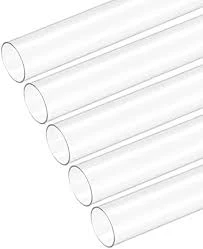Dec . 05, 2024 15:12 Back to list
industrial pipe fittings
Industrial Pipe Fittings An Essential Component in Modern Infrastructure
In the world of industrial manufacturing and construction, the importance of durable and reliable pipe fittings cannot be overstated. Pipe fittings serve as essential components that facilitate the connection, direction, and alteration of piping systems, which are integral to fluid and gas transportation in various applications. From residential plumbing to large-scale industrial projects, understanding the different types and applications of these fittings is crucial for engineers, contractors, and maintenance professionals.
Understanding Industrial Pipe Fittings
Industrial pipe fittings are components used to connect sections of pipe or tube, adapt to different sizes or shapes, and control the flow of liquids and gases. They come in various shapes, sizes, and materials, including PVC, stainless steel, copper, and more. Each type has its specific application depending on the factors such as fluid type, temperature, and pressure.
Common types of industrial pipe fittings include elbows, tees, reducers, couplings, and flanges.
1. Elbows are used to change the direction of the piping system. They can be found in 90-degree or 45-degree angles, allowing for flexible routing of pipes around obstacles.
2. Tees are fittings that allow the branching of a pipe. They serve a crucial role in distributing fluids to multiple outlets, making them essential in complex plumbing and irrigation systems.
3. Reducers are utilized to connect pipes of different diameters, facilitating a smooth transition between larger and smaller pipes, thus maintaining the flow and reducing turbulence.
4. Couplings are straightforward fittings used to join two pipe sections together, ensuring a tight seal to prevent leaks.
industrial pipe fittings

Applications in Various Industries
The versatility of industrial pipe fittings makes them applicable in a wide range of industries, including oil and gas, water treatment, food and beverage, and HVAC systems. In the oil and gas sector, for instance, robust fittings made from high-strength materials are used to withstand the extreme pressures and corrosive conditions often found in drilling and refining processes.
In water treatment plants, fittings play a critical role in ensuring the efficient and safe transport of chemicals and water. Here, materials must be resistant to corrosion and suitable for contact with potable water, making the selection of appropriate fittings vital.
Similarly, in HVAC systems, pipe fittings are necessary for directing airflow and maintaining efficient temperature control throughout buildings. The incorrect fitting can lead to significant energy losses, making quality and precision in manufacturing crucial.
Choosing the Right Fittings
When selecting industrial pipe fittings, several factors should be considered to ensure the right choice for specific applications. These include the type of fluid being transported, the temperature and pressure of the system, compatibility with existing materials, and regulatory standards that affect material selection.
In conclusion, industrial pipe fittings form the backbone of many piping systems used in various fields today. Their ability to connect and direct the flow of liquids and gases makes them indispensable in the construction and manufacturing sectors. By understanding the different types of fittings and their applications, professionals can ensure the integrity and efficiency of piping systems, ultimately contributing to the successful operation of industrial infrastructure. Whether for new installations or maintenance of existing systems, investing in quality pipe fittings is an investment in safety, efficiency, and long-term reliability.
-
High-Precision PVC Rigid Sheets for Vacuum Forming | AI-Optimized
NewsAug.05,2025
-
Durable PVC-M Water Supply Pipes | 60-Year Life
NewsAug.04,2025
-
Premium HDPE Water Supply Pipes: Durable & Leak-Proof
NewsAug.03,2025
-
Premium PVC-M Water Supply Pipe - Durable & Efficient
NewsAug.02,2025
-
HDPE Drainage & Irrigation Pipe - Durable, Efficient Solutions
NewsAug.01,2025
-
Premium PVC Transparent Pipe: Durable & Clear Solutions
NewsJul.31,2025

